Until recently, I’d not played a “Total War” game in nearly 15 years. Medieval: Total War was the first and only game in this hugely successful franchise that I’d owned prior to this year. While I certainly enjoyed it at the time, it was never truly a favorite title of mine, and over the years my memories of it have mostly faded away. One thing I do remember, due in no small part to my failed attempt to convince my wife to join me in creating our own Warhammer: Fantasy Battles (6th Edition) tabletop miniatures armies around that time, was my thought that the battle system in Medieval: Total War would be absolutely perfect for a Warhammer fantasy game. Unfortunately, Games Workshop was incredibly stingy with their IP in the early 2000s and it seemed like this union would never happen.
Despite my personal lack of financial support and some deeply flawed game launches, Creative Assembly’s franchise has been able to continue to grow and thrive. In recent years, through what must have been the work of some powerful practitioners devoted to the chaos gods, Games Workshop has done a near 180 since those early days when it comes to their stance on licensing their IP to prospective game developers. Thus, in a union surely overseen by the chaos god Tzeentch, the wedding bells have finally tolled and Total War and Warhammer have come together as Total War: WARHAMMER.
What Total War is
Total War is a turn-based strategy franchise known for its real-time large scale unit combat. While the campaign elements are definitely present and engaging, the visceral and tactical nature of the combat is what has made this franchise endure. Over the course of the game, you’ll engage in many battles. While it’s possible to auto-resolve many or even all of your battles, doing so too often robs you of a large part of what makes this series special.
What Warhammer adds to the equation
The addition of Warhammer to Total War brings with it a fundamental change in what an army will look like and how it will fight. It’s no longer simply about men of one nation or culture clashing with another. Yes, you can and likely will face similar forces to your own as you fight for dominance of your local territories, but beyond these borders exists far greater variation than the franchise has ever seen. You may know how to stop a cavalry charge, but you may not know how to stop the charge of ethereal spirits who shrug off your physical blows, how to deal with a Giant knocking your men aside with his massive club, or how to deal with a powerful legendary lord diving into a crowd on his dragon mount.
A game trilogy
The Warhammer fantasy universe is a massive one that has persisted for over 30 years. There are many different races spread across multiple continents. Each of these races is filled with a slew of stories, famous characters, magical abilities, and uniquely powerful units. It’s perhaps not realistic to fit this into a single game.
Creative Assembly’s solution is to create a trilogy that brings them all together. This first game features the Old World and the races that inhabit it. At launch, the game includes 4 primary races: The Empire (humans), Dwarves, Vampire Counts, and Orcs. Other races that make sense within the Old World will be added via DLC, and the Warriors of Chaos were made available as launch DLC bringing the playable race total to 5 for those that own it.
A grand campaign
The main mode of single player play in Warhammer: Total War is the campaign mode. Each of the 4 races has their own campaign and a selection of at least 2 starting legendary lords. The campaigns present you with a set of objectives and allow you the freedom to stop when you achieve a quicker short objective or to keep pushing onward toward the long objective. This level of flexibility is not often seen in recent strategy games and is a welcome one. The objectives themselves don’t ask you to conquer the whole world as is typical in many games within the genre either. Instead, they present reasonable goals tailored to your race’s wants and desires.
I often complain about a lack of victory conditions and to be fair they are limited here to your race’s objectives. If you desire absolute freedom in your pursuits, the game as shipped doesn’t really reward it. If you’re the Empire, you’ll need to unite your local territories by might or through negotiation (aka bribery and intimidation), defeat the Vampire Counts, and keep Chaos at bay. While the game grants you the freedom to head south and raze the villages of the orcs, you won’t be rewarded with victory for doing so. In fact, the campaign goes as far as to restrict which racial settlements you are allowed to occupy and which you can only sack and/or raze. For me, this hasn’t been an issue. If this concept sounds unappealing to you, I recommend first you give it a chance, and if you’re still upset after that, check out the user created Conquer Anywhere mod and presumably proceed to… conquer anywhere.
Every race has unique units, mechanics, buildings, tech trees, and events. Each of these is well integrated and makes playing the race highly thematic. For instance, let’s look at Orcs. Orcs must fight constantly or face self-destruction due to infighting, but are rewarded with free armies to assist them for their efforts. With limited access to income generating structures, they rely on looting and pillaging to keep their gold stores in the black. On the battlefield their Orc units are fierce in melee combat and can be joined by giants and monsterous spiders as well. Their events include lore appropriate things like punishing a warboss who has returned empty handed from a raid. In contrast to them, the Empire, is closer to a conventional human army than any other, yet still has quite a few tricks up its sleeves. Only they have offices you can place your heroes in to receive special benefits, a variety of wizards capable of using almost every lore of magic, a steampunk looking tank, and a war machine capable of eradicating enemies with a blast of energy. They also have access to tons of trade goods, great income generation, and a multitude of diplomatic options.
The setting and atmosphere of the game feel spot on for a strategy game set in the Warhammer fantasy universe, but the campaign story itself is quite subdued once the cinematics are over. There are however aspects of the game that still manage to create an RPG-like experience. Your lords will acquire new skills and bonuses that you unlock as they gain experience. They’ll also gain weapons, armor, magic items, and even special non-combat attachments that grant advantages and help define them as a unique character. Your legendary lords even have access to unique artifact items complete with custom quest battles that unlock as they level up. Despite these RPG elements, it’s important to go in with the mindset that this is a strategy game first and foremost. The narrative itself is not story driven and is up to you to create as you pursue the objectives laid out before you.
We… might have the technology
Tech trees are unique to each race and unlock and develop in different ways dependent on the race. The Dwarves have a massive tech tree with 2 distinct and deep branching paths. While one path brings numerous economic and city enhancements, the other grants buffs to your units. The Orcs on the other hand have a rather narrow and short tech tree with a few small branches and a requirement to construct several buildings including a Goblin’s Tinkerer Bench before any new technologies can be researched at all. Despite this uniqueness, it’s not unfair to say that for the most part technology and research still feels rather bland in most cases compared to other strategy games. The upgrades on offer are certainly nice, with most giving flat bonuses to unit or province stats, but they aren’t typically going to redefine how you fight. An exception to this would be the Orcs, as unlocking their Arachnarok Spiders and their siege weaponry does require prerequisite techs are acquired.
Now that’s what I call fightin’
I’ve never had a combat experience like the one present in Total War: WARHAMMER. For years I’d dreamed of watching armies of fantasy creatures clash on a grand scale and I’m pleased to report it’s as glorious as I’d hoped. Whereas there have been some excellent fantasy turn-based strategy games in recent years, none of them feature battles consisting of more than a handful of units. This is where this game differentiates itself and truly shines. It’s probably the only strategy game out there where I’d ever take the time to go back and watch a replay just so I can zoom the camera around to take in all the pure carnage. It’s also possible to learn a thing or two doing this as there is a definite learning curve when it comes to the use of proper tactics. This is especially true if you ever want to engage in multiplayer 1v1.
The battles play out in real-time but in single player allow pausing and giving orders at any time in all but the highest difficulty. This allows the pace to be set to more or less suit your capabilities as a tactician and commander. Thankfully, when you are short on time or just looking for a way out of fighting a very tough battle, auto-resolve is always an option and presents a very clear and accurate representation of who will probably win the battle. Battles take place across a variety of terrain maps and siege battles allow you to bring war machines to knock down gates and drop down onto the walls.
I can’t overstate the importance of tactics and unit knowledge. Combat is sometimes to the death, but often it ends when all of one side’s units have suffered enough of a morale loss that their faith in leadership has fallen and they hightail it off the battlefield. This is another big departure from what we normally see in fantasy strategy games and offers a breath of fresh air to the genre. Some units are simply unbreakable while others such as undead simply won’t rout and will instead start crumbling. For the most part though, keeping your units in an advantageous situation, that is winning a combat, next to a friendly lord inspiring them, and with no enemies hitting their flank or rear, is key to victory. There are units that can inspire fear and terror that can make even the bravest of soldiers think twice about remaining in combat. It’s also important to consider whether to pursue a fleeing enemy or to turn towards a new foe, as over time a unit may regain its composure before leaving the field and return to fight once more.
The rank and file units may make up the core of your army and ultimately determine the victor, but the high tier monsters and lords, especially the legendary lords, can have a huge impact. This is what I really like about the infusion of fantasy into the Total War system and is a big part of what has pulled me back into it. When Grimgor Ironhide, the legendary lord orc warboss, joins his force and begins swinging his giant axe around, the impact is felt both in his kill count and the visual impact of units being knocked around. The same is true of units like giants, dragon ogres, dragons, and the Vampire Count’s flying varghulfs. I was even successful when fielding an Empire army that made use of a lot of their powerful heroes such as their Witch Hunter, Warrior Priest, and wizards of various magic schools. Together with some standard troops to take the brunt of the enemies attack, these heroes were able to use their special powers and magic items to make a significant impact on the outcome.
As fun as it is to have a single lord and his army fighting another, things get even better when other nearby lords join the fight as it progresses. These additional lords enter as reinforcements and have a huge impact on not only the outcome but your tactics in general. Knowing that reinforcements are coming from a specific side of the map can throw a giant wrench in your plans to flank the force already on the field from that side.
So much to learn
I’m not going to say this game is as difficult to learn as some of the in-depth grand strategy games, but once you get beyond the basics there is a lot going on here under the hood. A solid tutorial and a useful and intuitive built-in help system can turn learning a strategy game into a fun experience rather than frustrating one. While both are included here, they feel as if they were designed for existing players of Total War to learn how Warhammer integrates, rather than to teach people how to effectively control the systems as a whole. This is especially surprising in a game that undoubtedly brought in many brand new fans by way of the Warhammer license and fantasy setting.
The tutorial failed to provide me with any info beyond the absolute basics. It’s possible I missed a link to information about it, but I didn’t realize I’d been neglecting army stances on the campaign map until well into my first campaign as the Dwarves. Once I realized, I had to restart as I’d wasted so much time moving about the map in an inefficient manner and had fallen far behind. The tutorial is driven by an advisor who pops up when new aspects of the game are introduced. Some information is provided, but there are a lot of things you’re going to have to research on your own.
My biggest grievance comes down to a lack of information being presented about the tactical battles themselves. I consistently struggled to arrange and manage my troops movements in an efficient manner. There are many commands that aren’t listed or available via UI buttons that are very important if you want to fight with a high degree of effectiveness. I feel that the game would have benefited greatly from a separate series of combat tutorials available from the main menu that taught the basics such as waypoints, moving units in formation, locking units and groups into a formation, making units turn quickly around, and so on. Furthermore, they could have dove into some explanations of basic tactics such as flanking, encircling, and effective charging.
Now I simply must mention a series of beginner videos that are available on Youtube which have taught me far more than the tutorial ever did. Youtube contributor Party Elite has produced a Total War: Warhammer – Beginner’s Guide series that is absolutely fantastic. It is both highly informative and concise. While an interactive tutorial from CA would have been best, this is a great alternative from the community. I’d recommend checking it out… “because that’s what being a great general is about.”
Multiplayer
Multiplayer consists of multiplayer campaigns as well as custom battles. If you’re a fan of multiplayer strategic combat, you’re likely already a long-time Total War fan. Perhaps you’re more of a fantasy person like I am though, and if that’s the case you may not know that Total War has what seems to be a rather large community of multiplayer enthusiasts and a tournament scene. I know I’ve still got a lot to learn in single player before I’d feel comfortable taking anyone on. I’ve enjoyed watched some of the many, many, videos on youtube showcasing multiplayer battles, and have learned a lot in the process. The opportunities are certainly there for those that crave the thrill of human competition.
As of now, it’s probably too soon to judge any multiplayer balances that may exist. From what I’ve seen, Vampire Counts are considered to be quite strong, but not unstoppable. Players have already come up with creative ways to deal with their ethereal wraith units that make up a key part of their strategy and which are typically problematic due to their high physical resistance. With the game still in very active development, new races on the horizon, and balance patching ongoing, we’re a long way off from knowing what if any race will end up overpowered in multiplayer overall.
Community mods
Steam workshop support has been fully implemented, and there are already well over 1,300 mods for this game with no signs of slowing down. Everything from aesthetic improvements to gameplay mechanic changes are available and ready for download. Whether you find your icons lacking in style, your Chaos steeds too small for your liking, or you want entirely new units, modders have been hard at work creating them for you. The amount of content already generated for such a recently released game leads me to believe that the community is large, healthy, and motivated to continue producing new content for everyone to enjoy for a long time to come.
Final Thoughts
There’s no denying that I was predisposed to enjoy this game. For me, the mix of Warhammer’s rich fantasy lore and universe and Total War’s massive and exciting tactical battles are like peanut butter and chocolate with a delicious campaign strategic outer shell. It’s not the most engrossing or deep strategic title, and it’s not the best at telling a rich and compelling story, but it is good enough at both to keep my interest while allowing me to enjoy the diversity it has to offer. With four unique races that all feel thematically appropriate and which have unique units and gameplay mechanics, there is a lot to enjoy even if your plan is to only playthrough each of them once.
While the base game offers a lot, it’s important to remember how much this game is going to continue to grow and blossom. There’s a large amount of free DLC planned, and in the case of paid DLC, many of these will add new aspects and even races to the base game regardless of whether you choose to buy them. Even if you despise DLC and never plan to buy any of it out of principle, you’ll still be able to enjoy the Free-LC and also what the modding community is hard at work creating with more and more free content being created all the time.
|
Space Sector score:
8.5/10
great
|
|---|
| The Good: – Warhammer fantasy is a perfect match in both setting and gameplay for Total War – Each race is diverse and features unique gameplay mechanisms – Choice of long or short objectives let you control your campaign length – Large variety of unit types to fight with – Quests and missions present short-term goals and occasionally unique rewards – Combat is exciting, tactical, and offers a high skill ceiling for competitive play |
| The Bad: – Tutorial and in-game help leave too many questions unanswered – Objectives can restrict your viable strategic choices within the campaign – Strategic and technology choices are less involved and important than in some other TBS games |
Bonus DLC Coverage (Not Factored into Score)
While I could have stopped with the review itself, I do own both of the current DLC offerings and want to provide you with a brief few thoughts on each. There is a large vocal group of people who have a lot of hostility towards Creative Assembly and Sega’s DLC practices, and as such many review sources such as Steam itself provide less than useful information. Unless of course you consider an ascii middle finger to be useful feedback. I paid for these DLCs, although the Chaos Warriors Race Pack was provided for free since I had preordered the game. In any case, I am judging the content of the DLC based only on what it contains and adds to the game. As a general rule, I’m not opposed to DLC and will purchase it if the content seems worthwhile and in order to support continued development of a game I enjoy.
Chaos Warriors Race Pack DLC
The Chaos Warriors exist in the base game as a mid to late game story event regardless of whether you own this DLC or not. Every race has an objective that involves keeping them and their leader subdued if you want to obtain victory. This DLC adds additional units to the Chaos Warrior AI army in the grand campaign and also provides you with the option to play as them in the grand campaign.
The Chaos Warriors in the grand campaign are played as a horde race. Horde races don’t establish or build up cities and instead consolidate all of the functions into the armies themselves. Each army constructs new buildings, researches technologies, and recruits units from within itself. They can’t occupy cities but instead must sack or raze them. The Chaos Warriors are not particularly diplomatic and rely primarily on their own might to help them cross the finish line to victory. They offer 3 unique legendary lords to choose from, which is 1 more than the base game races currently have, and they even include an absolutely massive dragon ogre that is like a wrecking ball on the battlefield. While the typical endgame event involves a chaos invasion, and you yourself are playing as chaos, it seems chaos never gets along with chaos and you’ll still have some surprise challenges to deal with even when playing as the Chaos Warriors.
I found playing a horde race, at least as this Chaos one is designed, to be a less enjoyable and more difficult experience than the standard races who can conquer and built up multiple cities. Many players I’ve read comments from have described having to use exploits and generally immersion breaking tactics to have a chance at winning at higher difficulty levels with this campaign. As such, I think this campaign will see some adjustments in the future in order to make it more enjoyable, especially if future experiments with horde races provide a cleaner experience.
If you are a completionist, love the idea of playing as Chaos after seeing their lords and unit list, or simply want the AI chaos invasion to be fully equipped to challenge you, this DLC is for you. If none of those things apply to you, you might consider waiting to see if the campaign is refined and made more enjoyable in the future. Given my brief experience with it, I will play it, but it’s last on my list of campaigns to go back to.
Blood for the Blood God DLC
This is a pretty simple pack that has had a lot of animosity hurled towards it. Some feel it’s the epitome of everything that’s wrong with DLC by charging for a feature that was ripped from the base game and which was simple to produce. Well, I paid full price for it and am pleased with what it brings to the table. What that consists of is pretty self explanatory, it’s blood, gore, and dismemberment. It’s a little more than that though. It also changes the UI aesthetics to suit the more blood soaked theme, and it adds some unique events which further promote fighting and bloodshed. One such event is called The Savage Blow and it aims to promote savagery by providing a 10 turn +20 charge bonus to all factions.
My understanding is this may have to be carved out as DLC to circumvent the game being rated mature instead of teen. I can’t confirm that, but what I can say is I find it satisfying to watch a giant bite the head off a soldier. It’s nearly as satisfying as watching an Arachnarok Spider impale them with its legs, or as watching a zombie continue to fight despite being dismembered. This mod adds not just a smidge of blood here and there, but rather copious and unrealistic amounts. It adds little gameplay value, but I’ve grown to like it and feel it offered me a reasonable value. If you’re not bothered by the lack of blood and would rather spend your money elsewhere though, this is a perfectly fine DLC to skip or wait for a sale on.
Keith Turner, also known as aReclusiveMind here on SpaceSector, has been an avid gamer ever since he first laid his hands on a Commodore 128 in the mid 1980s. He enjoys multiple computer game genres, but his primary interests are in deep strategy games, 4x games, rpgs, and action rpgs. He enjoys writing and hopes to contribute with additional reviews, previews, and informative AARs to the community. See all Keith’s posts here.
Magic

13 Comments
Related Articles:
- Eador: Masters of the Broken World Released
- Rome: Total War 2 Announced for 2013
- Chaos Reborn: The Battle of Wizards Classic is Back
- Star Lords Announced – A New Complex Space 4X TBS Game
- Computer Top Games Want Safe Haven for Second Contact

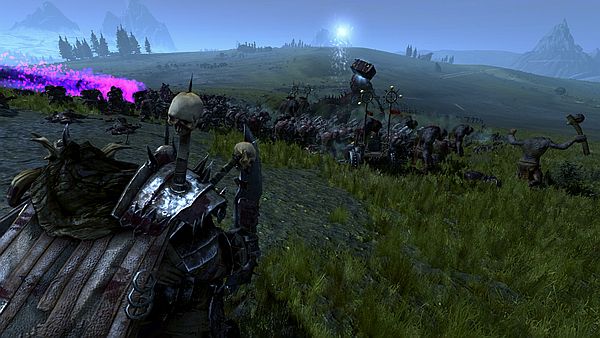
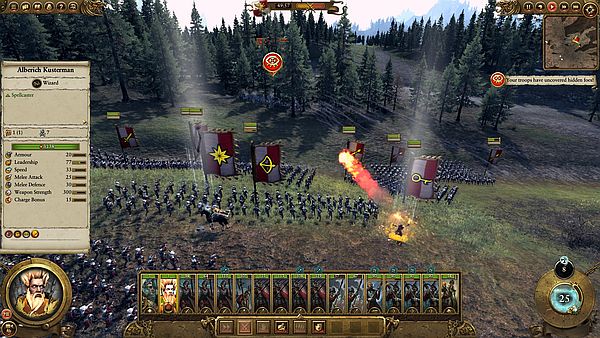
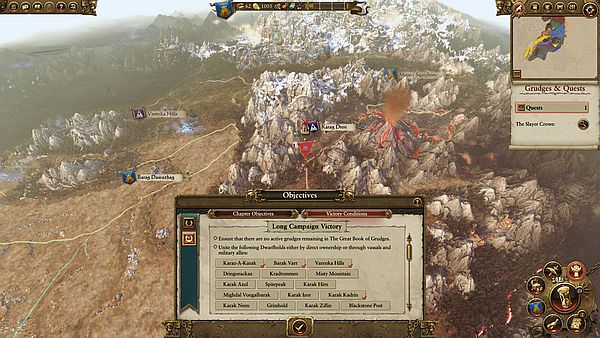
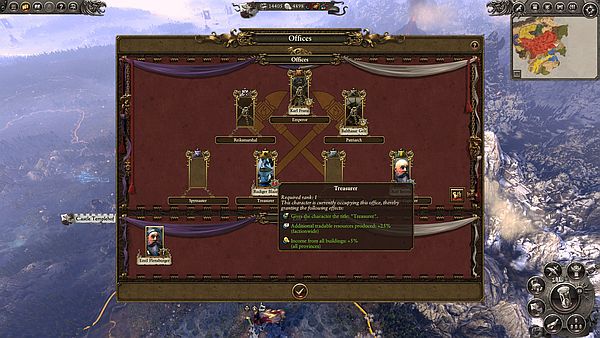
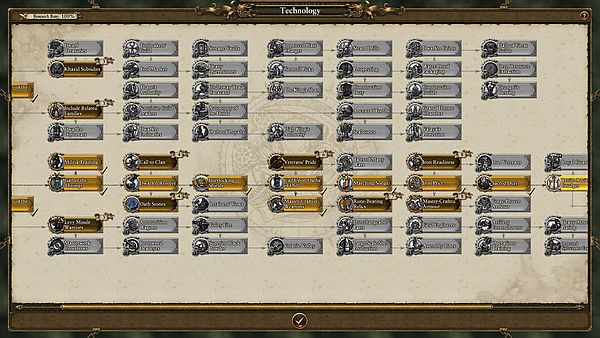
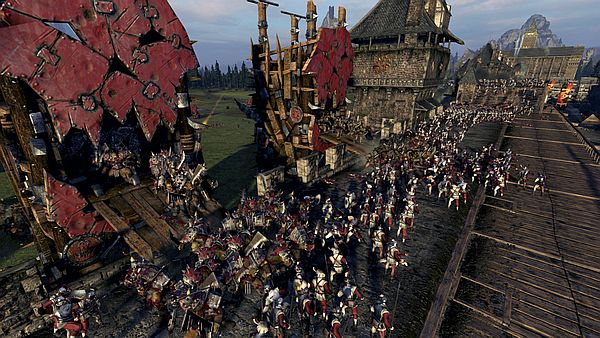
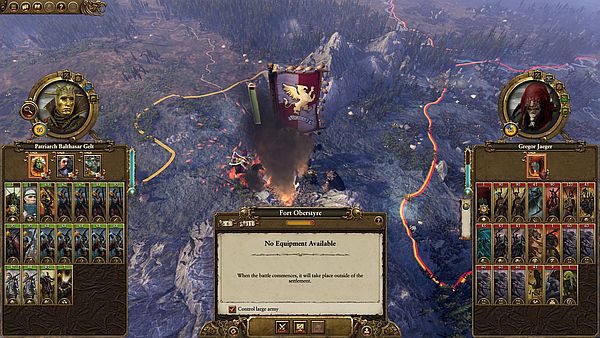
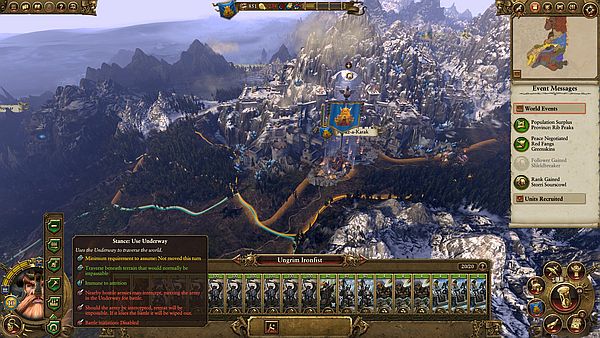
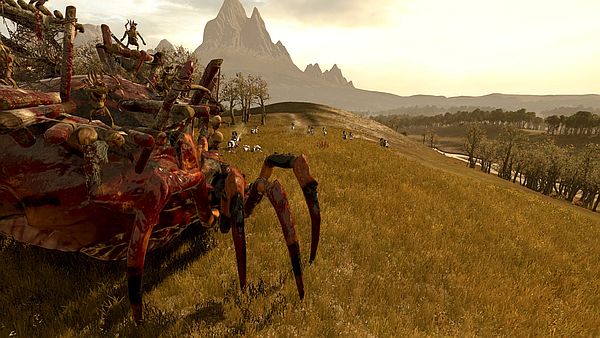

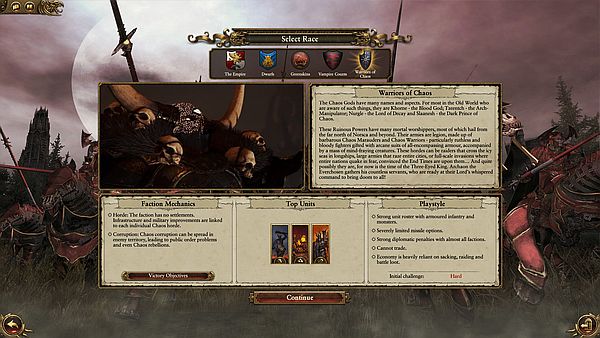
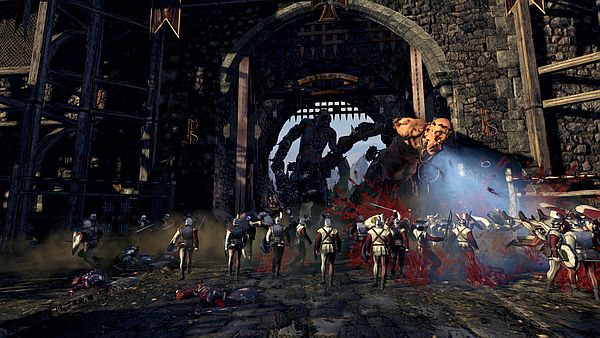
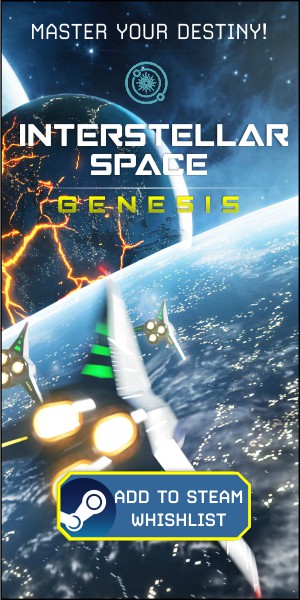
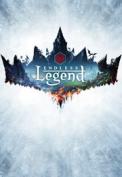

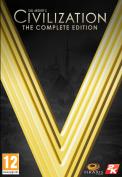


Did you have any comments about the AI for the single-player experience?
Difficulty wise, from my perspective as basically a newcomer to the Total War system, the AI offers a decent challenge. I played my campaigns on normal difficulty and had to restart a few times after I learned a lot from some of my initial failures. I won the last two campaigns I played without too much trouble, but there’s a lot left I can do to increase the challenge and the campaign was still enjoyable.
Very hard and legendary difficulty are supposed to cause the AI to create more challenging armies and also provides their units with leadership and attack bonuses. In addition, legendary difficulty takes away your ability to pause and issue commands in combat and restricts you to only a single auto-save so you can’t save scum your poor decisions.
I didn’t go into details on diplomacy in the article, but the AI generally does a pretty good job in this regard as well. On higher difficulties I believe the primary factions have an easier time getting their fractured relatives to confederate with them. This should present a more united front against you. The AI’s reason for its like/dislike of you in diplomacy is well presented, and I was generally able to get them to agree to things, including peace agreements, at times that seemed within their best interest.
If you have any specific questions, just let me know. I plan to try harder difficulties in the near future and will report back if I notice any glaring issues. I’ve been following the game pretty closely though and am of the impression that legendary can be quite a challenge even for experienced players.
AI wise, it’s one of the better ones in 4X games. AI armies will try to harass your undefended town/cities. One of the more infuriating aspect is the AI is able to stay just a pixel away from your army interception range so you’ll have to resort to some ambushing to catch them. Don’t listen to the idiots that try to chase AI all over the map and complain on forum how they can’t catch something that moves at the same speed as them.
Combat AI is another kettle of fish. You can generally win a 2:1 odds battle not because the AI is particularly bad but because you usually have better army composition. It’s definitely not stupid and their cavalry will punish your flank every time if you only focuses what’s in front. Due to the smaller scale of the map, frontal assault is pretty much the only option 99% of the time so maybe that help hides AI’s shortcoming. Siege battle is another point of contention. Some call it dumbed down and wish for the sprawling battles of Carthage in Rome II. However, having played Rome II, I personally prefer playing checkers with a good AI than chess with a dumb one – warhammer fortunately falls in the former category.
I’m fairly experienced gamer and I play on Very Hard. My main issue is the AI prefer massed low-mid tier troops than high tier ones but a less experienced TW player might find it just fine. Overall, definitely one of the best TW iterations. Get it if you have even a passing interest in the Warhammer setting or the TW series.
Thanks SQW, I appreciate you responding with your experiences regarding the harder difficulties. I’m eager to dive into them myself now that I have a better understanding of battlefield tactics. I felt I was fighting with one arm tied behind my back for awhile due to my lack of knowledge about how to properly use waypoints and keep units in formation. Also, while I understood the basic rock, paper, scissor of combat, watching intructional videos and multiplayer replay commentaries opened my eyes to how other stats and unit traits work.
I think the issue with the AI army composition is something they are working on, so perhaps we will see improvements in that area in the future. Also, I know there are some some mods trying to improve in this area. I’ve not tried them though. I’d prefer to see an official fix.
One thing that you might not have picked up on is the locked group.
If you click the padlock symbol on your unit-card group, you lock your group in the formation it is in and they move at the same speed while keeping that formation.
Now, if you attack with that group, the units will automatically pick their target according to a set of criteria (nearest distance to threat, best counter to opposition’s unit type etc) whereas an unlocked group would blob into that one target you picked and mess up your carefully arranged battle line. Once the battlefield is locked in melee, you can order individual units around as necessary. This takes away a lot of frantic clicking at the start when someone new to TW would individually assign targets.
This works better for all melee groups rather than mixed range/melee because AI tend not to move archers to a better position. Play around in custom to get the feel of it – it’s a big time saver and lowers your blood pressure to boot. =P
Hmm, my post was suppose to be a reply to Buatha…oh well.
Yeah, general battlefield knowledge of a TW game can be overwhelming especially in this iteration with non-human units and magic adding on top of a decade worth of assumed gameplay knowledge. Writing a good manual or tutorial is definitely a lost art in this industry. =(
That would be my only warning against someone interested in TW:W but has never played a TW game or new to RTS/4X game in general – be prepared for a bit of a learning curve.
Totally agree on manual writing being a lost art, this is a prime example. I found the youtubers who put up guides and lets plays to be extremely helpful in learning some of the more advanced tips and tricks and generally how not to lose every battle. I highly recommend ‘PartyElites’ videos in particular, he explains everything in a very clear concise way thats easy to understand. He’s very open to questions and feedback too.
It’s not only the art of writing manual but the art of explaining things that’s been lost.
You can bet professional instruction writer was one of the first position to be made redundant in the cost cutting transition. Most programmers and engineers are lousy at explaining their pet project to an outsider and even with the right intention, most just can’t ‘teach’ anything more complicated than FPS mechanics.
Thankfully, the prevalence of youtubers greatly reduced the entry barrier to games in the 4X genre and the new generation of gamers wouldn’t have to trawl through pages of forum post and gameFAQs. I do miss the old tombs with drawings and background info though but I haven’t purchased a box in 2 decades either….
Thanks for the review Keith! One thing i always disliked about the ‘newer’ total war titles were the loading times in between turns. How are they in this installment?
Turn times are very reasonable this time around. As with most strategy games, as you proceed further into the game you have more visibility of the map and can see a lot more of the AI army movement. There is an option to speed up the AI movement animations which reduces the amount of time you have to wait for your turn. I find this is optimal and still allows me to follow the action, but it’s easy enough to slow it back down with a press of the spacebar when something of particular interest is going on.
I’ve not noticed any complaints about load/processing time mentioned on their forums or reddit either. What I have read from many series veterans is that the Warhammer installment is much less buggy and more polished overall.
Glad to see this site didn’t die. I quit checking here last month.
Game looks good. I will wait two years, at which point I can get all the downloads and the game for 19 dollars on steam.
yours
SamDog
Thanks for checking back, SamDog.
Patience is nearly always rewarded, especially when it comes to PC games. I’m glad my review can at least put things of interest on people’s radar for future consideration. Your strategy is sound.
I’ve put some fair old hours into this game now and have to say I’ve enjoyed every second, it really is a brilliantly crafted experience. I’ve always had a passing interest in the Totalwar series but never got into them, after playing this I’m totally sold and can see this hopefully turning into an ongoing series of expansions and updates. If CA keep up the quality with the other factions i’ll have no hesitation in purchasing them.